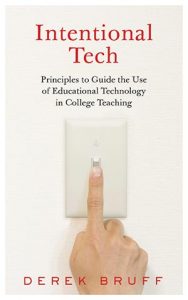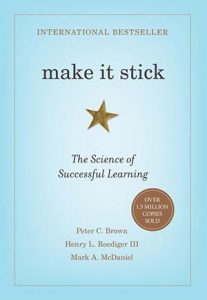Wrapping an Exam or Assignment
Students in many courses have just taken their first exam, or just turned in (and maybe already received a grade on) their first major piece of work. When students’ scores are lower than they expected, the results can come as a bit of a shock. It’s easy for students to feel disappointed and discouraged when they begin to realize how much they don’t know, but we don’t want them to give up. Instead, we want them to use their time as effectively as possible moving forward. To make the first assessment a useful reality check, rather than a defeat, we need to normalize error and show students how to learn from their mistakes.
The moment of dismay many students experience when they get their first big grade is a time when they’re especially open to adapting their strategies. An exam or assignment wrapper can help them identify gaps in their knowledge and evaluate their preparation strategies. A wrapper prompts reflection, asking students to think critically about their own learning, so that they can learn more effectively in the remainder of the class and in future courses. A wrapper should ask students to do two things:
- Review their work and do some error analysis, identifying areas of weakness and what they need to do to strengthen those areas. If students have an opportunity to revise their work or correct their errors, they should also be asked to explain why the changed answer is the right response, or how the work could be improved. They need to identify what major concepts or skills they had trouble with, so they can go back and fill in the gaps in their learning. We can even encourage them to form study groups to work on this.
- Reflect on how they prepared for the exam or how they approached the assignment. How much time did they invest? What did studying mean—reading the material, outlining, reviewing notes, answering practice questions, completing multiple drafts and getting feedback? If their strategies didn’t work, what do they plan to do differently next time? Less successful students are often those who prepare for an exam by reading over their notes repeatedly, rather than grappling with sample questions, or who invest most of their attention in the surface features of an assignment. They may be investing enormous amounts of time to little avail, but you can point them toward guides to effective study habits, like Dr. Chew’s. Students should also look for patterns in their errors: did their mistakes reflect miscalculations, misreading questions, etc.?
Some faculty don’t record an exam grade until the wrapper is completed; some use them as in-class assignments; some administer a second exam on the same material after a week and average the two grades or let students use the wrapper to earn back a limited number of points they missed. Some even give two-stage exams, which are another great strategy for turning exams into learning opportunities: In the first stage, students take the exam individually, and in the second, they take the same exam or a portion of it in a small group, where they get to discuss and justify their answers. The second stage leverages students’ motivation to do well on the exam to promote critical thinking and knowledge construction.
If you’d like some support to create an exam or assignment wrapper, or to design other opportunities for students to reflect on their own learning and performance, please contact us at pro-teaching@fsu.edu. We look forward to working with you!
2024 FALL FACULTY READING GROUPS
This semester the Center for the Advancement of Teaching is offering the following faculty reading groups. Each group will meet once a week for three weeks to discuss the books in sections. We hope you can join us! Please register here.

Wednesdays: 10/09, 10/16, 10/23
1:30–3:00 p.m.
Dirac Library Conference Room
Print copy, delivered through interoffice mail
Intentional Tech: Principles to Guide the Use of Educational Technology in College Teaching by Derek Bruff explores how educators can thoughtfully integrate technology into their teaching practices to enhance student learning. Bruff provides practical strategies and real-world examples that emphasize intentionality and pedagogical purpose. Whether you’re a tech enthusiast or a cautious adopter, Intentional Tech offers valuable perspectives to help you navigate the evolving landscape of educational technology. Let’s gather, discuss, and discover new ways to make our teaching more intentional and impactful with educational technology. Note: AI tech was intentionally used in producing this blurb!

Fridays: 10/11, 10/18, 10/25
1:00–2:30 p.m.
Dirac Library Conference Room
Print copy, delivered through interoffice mail
In Make It Stick: The Science of Successful Learning, Brown, Roediger, and McDaniel assemble the most important current research on learning, to deliver “highly effective, evidence-based strategies to replace less effective but widely accepted practices that are rooted in theory, lore, and intuition.” It turns out that much of our intuition about learning is misleading; this book group will focus on using the research to develop more effective learning strategies for our classrooms



